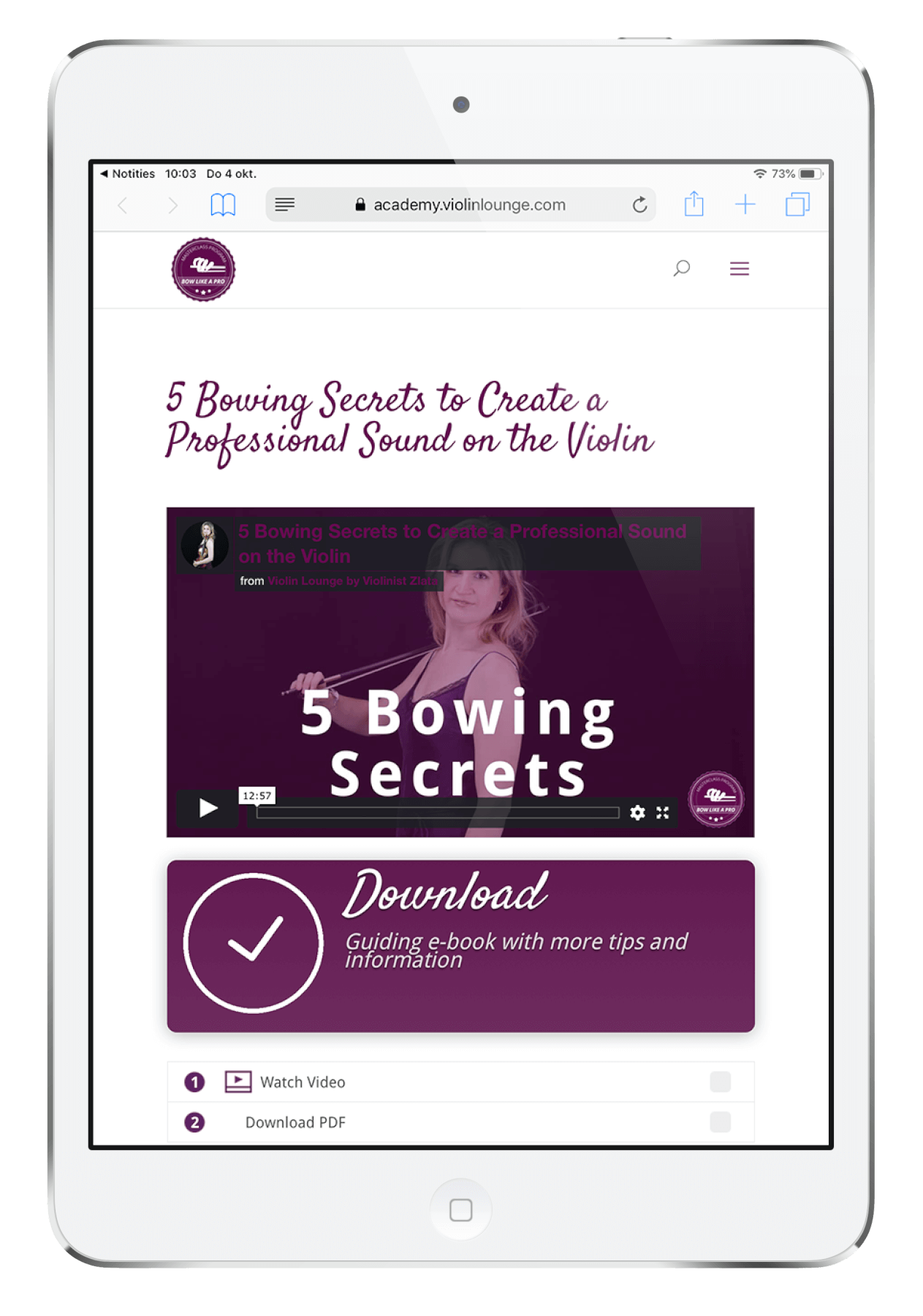When Does Your Pinky Leave the Bow?
You might hear all the time that your pinky should remain on the bow all the time… nicely curved.
However… when you look at performers playing, you see the bow hold changing in every bow stroke and you see them playing with the pinky off the bow.
In this video I would like to clarify a couple of things about if the pinky should be on the bow and when not.
First you need to know what function your pinky has in bowing and when you need it and when you don’t. Sometimes your pinky can even get in the way of smooth bowing.
You need your pinky when you play at the frog to smoothen your bow changes.
At the extreme tip you might want to lift your pinky a little bit, because you don’t really need it at that point. Some people can’t even bow straight to the extreme tip with their pinky on the bow. Choose to lift your pinky instead of bowing skew.
In saltando you use the natural jump of your bow and you don’t want your bow hand to get in the way of this natural movement. Lifting your pinky can make the bow jump more naturally.
I hope you now understand that your bow hold is not a rigid thing, but a constant motion. Whether you have your pinky on the bow depends on the music you play and the function the pinky has in this.
Is this video helpful to you? Please let me know in the comments below! If you like it, share it with your friends!
Love,
Zlata
PS: Do you have questions or struggles on violin or viola playing? Post a comment below or send an e-mail to info@violinlounge.com and I might dedicate a Violin Lounge TV episode to answering your question!
Improve your violin bowing technique
Enjoy my FREE mini Masterclass 5 Bowing Secrets to Create a Professional Sound on the Violin
2 Comments
Submit a Comment
In this episode I comment on a video sent in by a viewer who wants to improve her vibrato as a beginner violinist
I’ll teach you how to loosen up your wrist, so you can create a beautiful sounding vibrato and control it’s tempo
When you only use your arm and lock your wrist, it’s hard to control your vibrato
In the video I give some exercises to start using your wrist for vibrato and move your arm a little less. In this way you can control the tempo of your vibrato and your violin will be more stable.
Start with vibrato when you learned the third position
If you’ve learned how to shift between positions, you are already used to a motion that is a bit similar to vibrato. It will be easier to learn vibrato at this point.
Learn a Beautiful Vibrato on the Violin
Join this free mini Mini Masterclass

Hi! I'm Zlata
Classical violinist helping you overcome technical struggles and play with feeling by improving your bow technique.
First practice vibrato in the third or fourth position
In this way you have support from the violin and it’s easier to move your wrist. You can do the exercises with a metronome in different tempi, so you can get control over the tempo and adjust your vibrato to the note and the piece you are playing.
When the exercise goes well, move to the first position.
Let me know in the comments how this video helped you improve your vibrato!
2 Comments
-
rohit aggarwal on January 9, 2019 at 7:09 am
Thanks for the information
Submit a Comment
In this episode I comment on a video sent in by a viewer who wants to improve her vibrato as a beginner violinist
I’ll teach you how to loosen up your wrist, so you can create a beautiful sounding vibrato and control it’s tempo
When you only use your arm and lock your wrist, it’s hard to control your vibrato
In the video I give some exercises to start using your wrist for vibrato and move your arm a little less. In this way you can control the tempo of your vibrato and your violin will be more stable.
Start with vibrato when you learned the third position
If you’ve learned how to shift between positions, you are already used to a motion that is a bit similar to vibrato. It will be easier to learn vibrato at this point.
Learn a Beautiful Vibrato on the Violin
Join this free mini Mini Masterclass

Hi! I'm Zlata
Classical violinist helping you overcome technical struggles and play with feeling by improving your bow technique.
First practice vibrato in the third or fourth position
In this way you have support from the violin and it’s easier to move your wrist. You can do the exercises with a metronome in different tempi, so you can get control over the tempo and adjust your vibrato to the note and the piece you are playing.
When the exercise goes well, move to the first position.
Let me know in the comments how this video helped you improve your vibrato!
2 Comments
-
rohit aggarwal on January 9, 2019 at 7:09 am
Thanks for the information



Thanks for the information
Thanks for watching, Rohit!